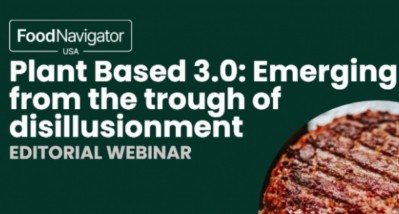Blended & hybrid protein products’ potential for sustainable food production

Both blended and hybrid products provide a more diversified protein profile while reducing reliance on traditional meat production and its environmental impact on land, water and greenhouse gas emissions.
While hybrid products that combine plant-based and cultivated meat have the potential to offer a more complete protein profile closer to traditional meat, these foods are still in development. Whereas, blended products, which combine plant- and animal-based ingredients, offer a more immediate impact for reducing reliance on conventional meat.
ADM provides cost optimized options of meat and dairy products using soy protein ingredients
For blended products, Fernandez explained that ADM offers soy concentrates and textured proteins to “partially replace meat in formulations to reduce cost in use” while still providing gelation, emulsification and water retention for products like sausages, hams, mortadella, hot dogs, burgers and chicken nuggets.
For blended dairy beverages, the company incorporates whey isolates and milk concentrates with plant-based ingredients. Similarly, ADM soy proteins “can support the partial replacement of eggs,” Fernandez said.
She added, “These strategies can help manage costs and supply chain challenges as they may arise.”
Marketing dietary diversity, nutrition, sustainability to drive consumer acceptance for blended, hybrid products
While these products may be comparable in cost for consumers and more environmentally friendly than their conventional animal counterparts, marketing these products can be challenging.
Consumers value both sensory experience and cost, Fernandez explained. Because consumers seek new food experiences with novel ingredients that promote dietary diversity, nutrition and sustainability, hybrid and blended products can be positioned to serve these needs, particularly for plant-forward consumers.
“Our research shows that taste, texture, nutrition and cost are all key factors for flexitarian consumers who are considering purchasing and trying hybrid meat products. Plus, 73% of global plant-forward consumers – defined as flexitarians, vegetarians or vegans – believe that taste and nutrition are equally important,” Fernandez said, citing ADM’s 2023 Global Protein Consumer Discovery report.
Amid the growing preference for new flavors and ingredients, familiarity still is essential to bridge and expand the consumer acceptance gap, she added.
Popular plant-based proteins like soy, wheat, pea and mycelium offer consumers familiarity, which can ease adoption as these proteins are already present in many existing food products.
“Familiarity is also an important consideration in the adoption of new offerings. Hybrids present an opportunity to build consumer familiarity and encourage exposure to new food products, which can help progressively create new acceptability standards for consumers,” Fernandez said.
Ingredient, technology diversification
Fernandez pointed out that the development of hybrid and blended foods will be “crucial to the acceptance and adoption of these novel sources.”
As technology evolves, how these ingredients are applied into products will evolve with it. Fernandez identifies technologies like precision fermentation and cell cultivation, in addition to other processing techniques that support “the development of plant proteins with improved functionality, color and flavor profiles” as key factors to producing diversified ingredients that offer “different levels of functionalities, textures, concentration, affordability and more.”
Based on ADM’s report, flexitarian consumers ranked trying novel plant-based ingredients in hybrid products highest, followed by hybrid products made from a combination of familiar and new technologies, fermentation-derived sources and lastly, cell cultivated products.
Maximizing nutritional yield
When developing hybrid products, ADM prioritizes maximizing nutritional value by focusing on consumer preferences for high-quality protein, balanced sodium content, increased dietary diversity, and a nutritional panel that closely resembles traditional meat or dairy options, according to Fernandez.
The company relies on the Protein Digestibility Corrected Amino Acid Score (PDCAAS) when replacing animal-based proteins with alternative ingredients of comparable protein quality. A complete protein, like animal protein or certain plant proteins like soy, has a PDCAAS of 1.
“Hybrid foods are advantageous to this process, as we have learned that the nutritional synergies are easier to manage than vegan or vegetarian products. Typically, when combining an animal-based protein with a plant-based protein, the general nutritional quality of the finished product is not drastically impacted because protein from milk, eggs and meat contain additional amino acids that complement some of the lower number of amino acids of plant-based proteins to maintain a PDCAAS of 1,” she said.
ADM's functional pea proteins offer customizable solutions to elevate the nutritional quality of hybrid products. The company also provides low-sodium protein options like isolates, functional concentrates, and textured proteins, allowing manufacturers to achieve the perfect balance of nutrition, taste, texture and cost.



















